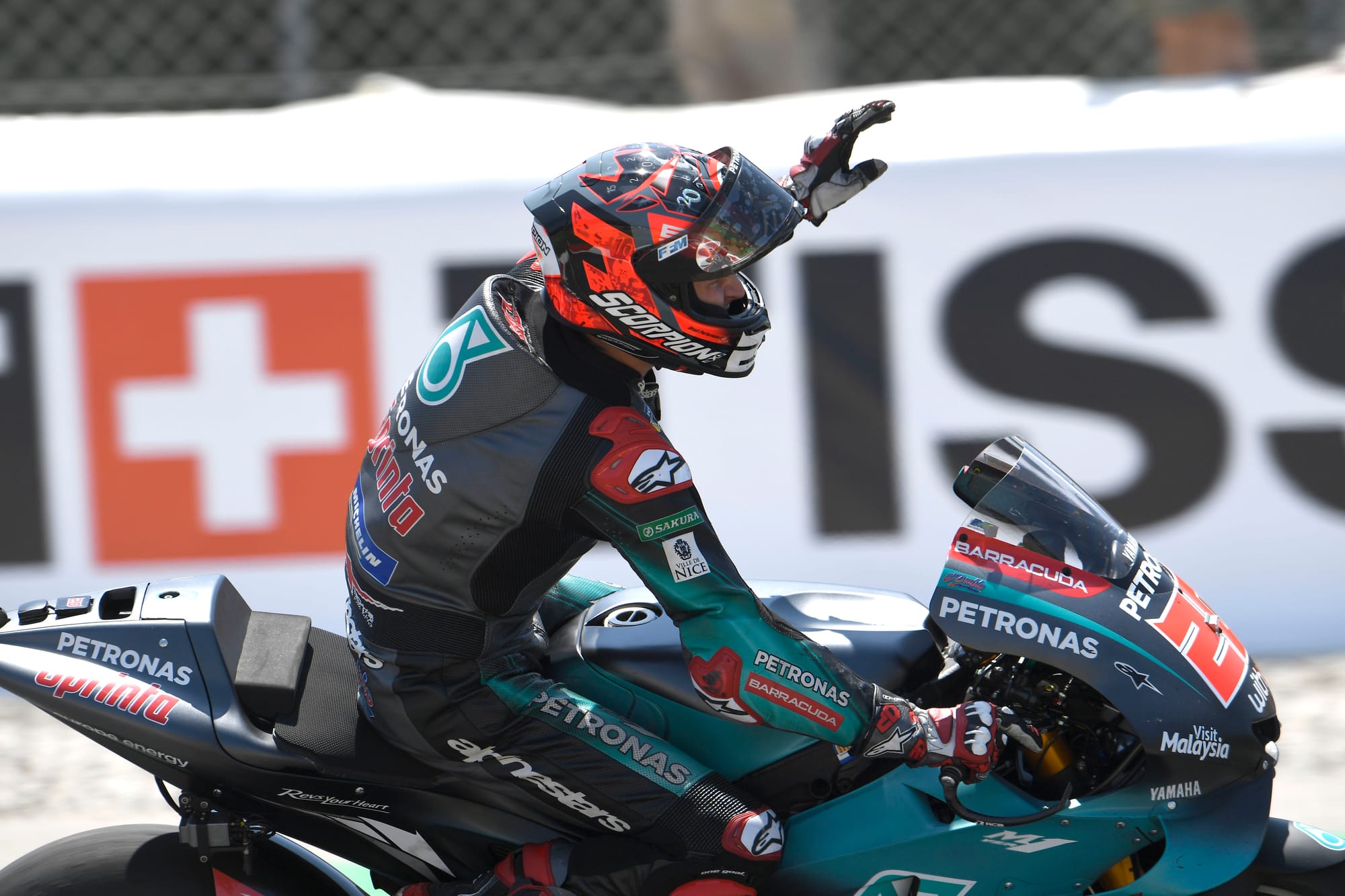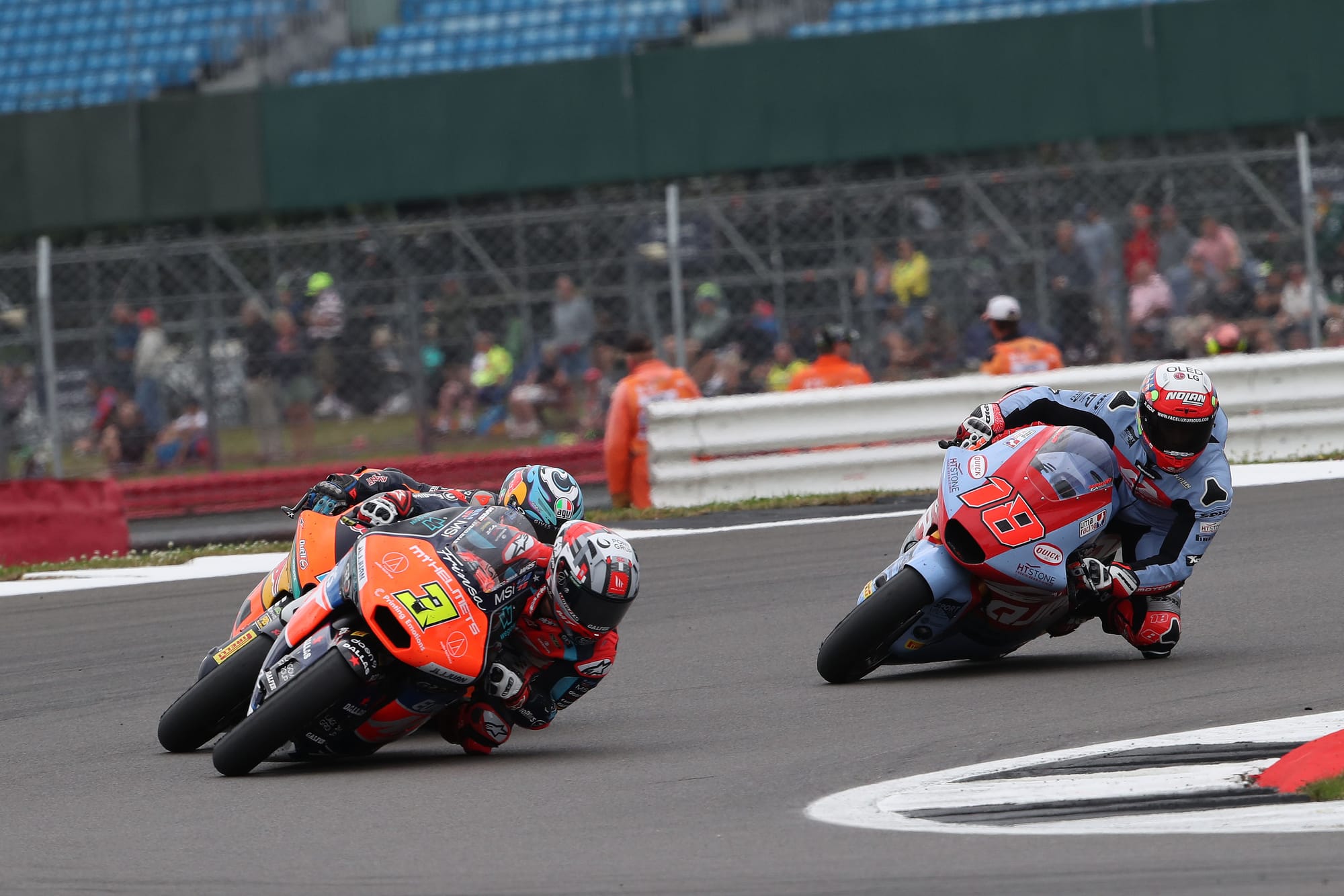The tables have turned again in the MotoGP rider market, with veteran Jack Miller likely to be given a temporary exemption – which would come at the expense of a promotion for the prominent Moto2 rider.
Sky Italia reported that Miller, who appeared to have come to terms with the idea of leaving MotoGP at the end of the year just two weeks ago, will receive an offer from Yamaha and its future team Pramac, where he is set to team up with Miguel Oliveira.
The MotoGP line-up will then comprise 261 entries, and Yamaha’s four-rider line-up will comprise 476 entries.
The rider left on the sidelines will therefore be Moto2’s Sergio Garcia, for whom Pramac is the only realistic route to a premier class ride in 2025 – with all Ducati ranks stocked, the vacant LCR Honda ride determined by the preferences of back-seat rider Idemitsu and Trackhouse looking set to snap up Garcia’s Moto2 teammate Ai Ogura.
There is a suggestion that Miller’s status as the network’s sole Australian representative is a major asset here, in making the series’ promoter’s interest in our TV-driven role keep him on the network – which, if true, would at least put to rest the stereotype that MotoGP prioritises the interests of Spanish riders above all else.
But then, of course, our role can’t. power If Yamaha decides to sign anyone, a move to pick up Miller would send a message, whether intentional or not, that Yamaha is more focused on Fabio Quartararo than before.
With Alex Rins struggling with fitness issues, the presence of two riders in his new partner’s team approaching 30 – two riders who have proven themselves in both factory and championship roles but whose MotoGP ceiling is likely to be well below that of a “championship contender” – suggests that any championship ambitions Yamaha may have in the medium term will fall on Quartararo. “If we are in a position to win anytime soon, he will be the man to win.”
It’s not an unreasonable position. Having a star of Quartararo’s calibre – a top-five or better MotoGP rider in pure performance every year since his arrival in 2019 – means the rider’s strategy is at least partly working. And while he seemed quite open to having a rookie on a Pramac Yamaha, he’ll likely appreciate being surrounded by plenty of staff experience – Suzuki experience from Rins, Ducati/KTM experience from Miller, KTM experience from Oliveira.
But the Miller/Oliveira Pramac line-up doesn’t match the success stories of MotoGP’s biggest riders in recent years: Ducati’s success with Becco Bagnaia, Enea Bastianini and Jorge Martin; Pedro Acosta’s revolution at KTM; or, more accurately, Yamaha’s success with Quartararo.
Predicting an alternative timeline can only be an exercise in preaching, but given where Yamaha is now, I hope you’ll forgive me for making this proposition: if Dani Pedrosa accepts the Petronas SRT offer he received in 2019, Yamaha will be closing in on a decade-long MotoGP title drought.
Pedrosa would have been a good deal, but his decline allowed SRT and Yamaha to stumble on the contract. The manIt took a few tests to realize that they might have hit it big with the Quartararo, and it only took a few races. He knows He – She.

This paid off immediately. And it’s fortunate for Yamaha that it did so too late, because if it hadn’t entered the scene with “El Diablo,” it wouldn’t have been able to include a rider of this calibre in its lineup now. Certainly not with the current M1 that Quartararo has to drag to a respectable level every weekend.
But what is Quartararo’s success if not the inspiration to try harder and get back to the roulette table. True, he is 25, but he is not under a lifetime contract with Yamaha – there is no guarantee that a more successful competitor will not turn his head in two years if the M1 is still not good at that stage.
The addition of Pramac, which has a good track record of developing talent in the works team and is fully prepared to do so, is a free-for-all for the riders’ evaluation. Yamaha shouldn’t have used this free-for-all to take a gamble like Quartararo – a rider with all the theoretical advantages in the world but who has also had some really poor Grand Prix seasons.
Instead, he was given a free run by the Moto2 points leader who currently sits at the top of the four-rider Boscoscuro group, and who has been pretty good in every season he has been in the paddock.
Garcia wouldn’t be so sure – almost none of the starters are. He’s never tower Garcia has done better than his peers, as Quartararo did in the Spanish Moto3 season. But there’s clearly something to this. It’s hard to see him do more this year in particular – if getting to the top of the timesheets is a skill, how about Garcia going from 20th on the first lap to fourth on the slick corner to extend his Moto2 lead last time out at Silverstone?

There is no certainty that Garcia will be faster than Miller in a sufficient period of time for Yamaha, or that he will achieve what Miller has achieved in MotoGP. Miller was also a top rider in the lower classes of Grand Prix, as was Oliveira. That is how most of them ended up where they are now.
But Yamaha bosses know more or less what they’re getting in both cases. With Garcia, they don’t.
How could they resist the temptation to find out? How could anyone, after the lesson learned from the 2019 Petronas SRT “happy accident” seat?




